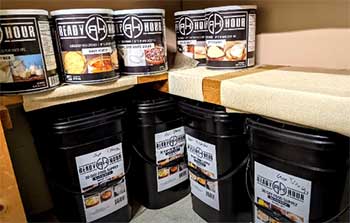Picture this: you’re out camping in the crisp winter air, your RV or truck camper is cozy and warm, and you’re sipping hot cocoa without a worry about the cold. That’s the magic of the VEVOR 8KW Diesel Heater.
I’m thrilled to share my experience with this game-changer, and trust me, you’ll want one too. It’s portable, efficient, and perfect for outdoor adventures or heating up your workspace. With its Bluetooth control and low fuel consumption, it’s a steal for anyone needing reliable heat.
Let’s explore why this heater is a must-have for your next trip!
My Journey With The VEVOR Diesel Heater

I’ll never forget the first time I fired up my VEVOR 8KW Diesel Heater.
It was a chilly November evening, and I was prepping my Eurovan for a weekend camping trip in the mountains.
I’d heard about diesel heaters being a game-changer for off-grid adventures, and after some research, I settled on VEVOR’s all-in-one model.
Why?
It promised no-fuss installation, solid heat output, and a price that didn’t make my wallet cry compared to premium brands like Webasto.
Spoiler alert: it delivered, but not without a few hiccups.
Setting it up was a breeze—mostly. The unit arrived with everything neatly packed in one case, which I appreciated. I grabbed my trusty hole saw, cut a 5-inch hole in the van’s floor, popped in a metal insert, and routed the intake and exhaust hoses.
Connecting it to the 12V battery was straightforward, and within an hour, I had it running. The first blast of heat was unreal—it cranked out scorching air in minutes, turning my van into a toasty haven.
I played with the Bluetooth app, which let me tweak settings from my phone while lounging in my sleeping bag. Talk about convenience!
But it wasn’t all smooth sailing. The first time I took it camping, the fuel pump stopped clicking after a few minutes. I was annoyed, thinking I’d gotten a dud. After some troubleshooting, I realized the pump was stuck—likely because it was brand new and needed diesel to lubricate it properly.
I flipped it upside down, gave it a few gentle taps, and tested it with a spare battery. Boom, it was back in action. That little scare taught me to always carry a spare pump (they’re cheap, like $20). Since then, it’s been a reliable companion, keeping me warm through freezing nights.
Using it in my van felt like having a mini furnace. Even on the lowest setting, it kept my space cozy in 20-degree weather. I’ve also tested it in my garage for woodworking projects, and it heats up the space faster than my old propane heater ever could.
The remote control is a nice touch—I can start it from 30 feet away, so it’s warming up before I even step inside. My only gripe? The instructions could be clearer. I had to watch a few YouTube videos to get the hang of the settings, but once I did, it was smooth sailing.
Pros of The VEVOR Diesel Heater
- Incredible Heat Output
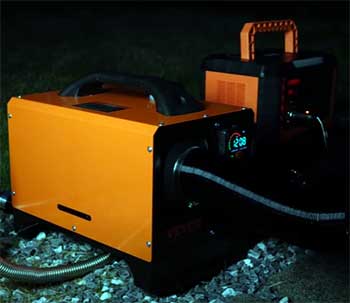
Let’s talk about the heat—this thing is a beast.
With an 8KW rating, it pumps out up to 27,296 BTU, enough to warm spaces between 215 and 269 square feet.
I’ve used it in my Eurovan and a 10×12 shed, and it transforms chilly spaces into cozy retreats in under 10 minutes.
The sandblasting aluminum heat exchanger is no joke; it transfers heat efficiently, so you’re not waiting forever to feel warm.
Even in sub-zero temps, it’s kept me comfortable without breaking a sweat (well, figuratively).
- Fuel Efficiency That Saves You Money
One of my favorite things about this heater is how little fuel it sips. With a 5-liter tank, it runs for up to 8 hours on just 0.16 to 0.62 liters per hour. That’s about a gallon for a full night of heat!
Compared to my old propane heater, which guzzled fuel and needed constant refills, the VEVOR is a budget-saver. I’ve gone entire camping weekends without needing to top off the tank, which means more time enjoying the outdoors and less time fussing with fuel.
- Portability and Ease of Use
The all-in-one design is a godsend for anyone who hates complicated setups. Everything—fuel tank, pump, hoses—is packed into a compact unit. I’ve moved it from my van to my garage with no hassle.
The Bluetooth app and remote control make it feel like a gadget from the future. I can adjust the temperature from 46.4°F to 96.8°F without getting up, which is perfect when I’m snuggled in my sleeping bag. The LCD display is simple, even if it took me a bit to figure out the buttons.
- High-Altitude Performance
If you’re adventuring in the mountains, this heater’s got your back. Its automatic altitude compensation works up to 18,045 feet, adjusting fuel and air intake so you don’t have to fiddle with settings.
I tested it at about 8,000 feet during a Colorado trip, and it performed flawlessly—no stalling, no weird noises, just steady heat. This feature alone makes it a standout for high-altitude campers like me who don’t want to mess with manual tweaks.
- Safety Features You Can Trust
Safety is a big deal when you’re running a heater in a confined space. The VEVOR comes with overheating protection that kicks in at 518°F, plus constant temperature control and a timing function.
I’ve never felt uneasy leaving it on overnight in my van. The voice broadcasting feature is a quirky bonus—it’ll wish you a “nice trip” when you shut it down properly. Just don’t yank the plug; use the off button to let it cool down safely.
Cons of The VEVOR Diesel Heater
- Initial Setup Can Be Tricky
While the installation is marketed as “no-fuss,” it’s not exactly plug-and-play. Cutting a hole in my van’s floor was nerve-wracking, and the instructions were vague at best. I had to rely on YouTube tutorials to get it right.
If you’re not handy with tools, you might need help. The fuel pump issue I ran into also suggests that new units can have quirks, so be prepared for some trial and error.
- Noise Levels Aren’t Silent
Don’t expect this heater to be whisper-quiet. The fuel pump’s clicking and the fan’s hum are noticeable, especially in a small space like a van. I’ve gotten used to it, but if you’re a light sleeper, it might bug you.
Insulating the pump or mounting it away from the chassis can help, but it’s something to consider if silence is a priority.
- Voltage Sensitivity
Here’s a heads-up: this heater is picky about voltage. It’s designed for 12V systems, but when I tried it with my truck’s lithium battery setup (which runs at 13+ volts), it threw a high-voltage warning and wouldn’t ignite.
I had to use a separate deep-cycle battery, which was a hassle. If you’re using a non-standard power system, you might need a DC-to-DC converter to keep it happy.
- Instructions Need Work
The manual is a weak point. It’s like it was translated by someone who’s never seen a heater before. Settings like H-1 to H-6 and the LCD controls were confusing at first, and I accidentally set a timer once that turned it on in the middle of the night.
Clearer instructions or a better user guide would make this a lot more beginner-friendly.
Maintenance Tips For Your VEVOR Diesel Heater
- Keep the Fuel System Clean
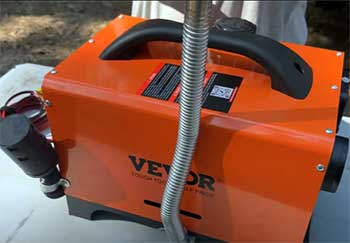
Your heater’s fuel pump is the heart of the system, and it needs clean diesel to stay happy.
I learned this the hard way when my pump got stuck. Use high-quality diesel and consider adding a fuel filter to catch any gunk.
Every few months, check the fuel lines for kinks or leaks—trust me, a tiny drip can turn into a messy problem.
If you’re not using the heater for a while, drain the tank to prevent stale fuel from clogging things up.
- Lubricate the Pump Properly
That stuck pump incident? It happened because the new pump wasn’t lubricated enough. Before your first use, run the heater for a few minutes to let diesel coat the pump’s internals. If it stops clicking, don’t panic.
Disconnect it, hold it upside down, and tap gently to free it up. I keep a spare pump on hand for long trips—it’s cheap insurance. Also, mount the pump at a slight angle to avoid air pockets, which can cause dry spots.
- Vent and Exhaust Maintenance
Proper ventilation is non-negotiable. The exhaust must vent outside to avoid carbon monoxide buildup—I always double-check that the hoses are secure and not kinked. Clean the intake and exhaust pipes every season to remove soot or debris.
I use a small brush and compressed air to keep them clear. If you notice black smoke or the heater shutting off randomly, it might be a clogged exhaust, so don’t skip this step.
- Battery and Power Checks
Since this heater is voltage-sensitive, keep an eye on your battery. A weak 12V battery can cause startup issues or error codes. I test my battery’s charge before every trip and carry a charger just in case.
If you’re using a lithium system, a DC-to-DC converter is your friend to drop the voltage to 12V. Also, avoid unplugging the heater abruptly—it needs a proper shutdown to cool down and prevent damage.
- Regular Testing and Calibration
Run your heater at least once a month, even in the off-season, to keep everything in working order. I’ve found that letting it sit for too long can lead to stuck parts or carbon buildup.
Use the Bluetooth app to tweak settings and ensure the temperature sensor is accurate. If you’re at high altitudes, let the automatic compensation do its thing, but check the heat output to make sure it’s performing as expected.
Comparison of VEVOR Diesel Heater With Other Brands
- VEVOR Vs. LF Bros Diesel Heater
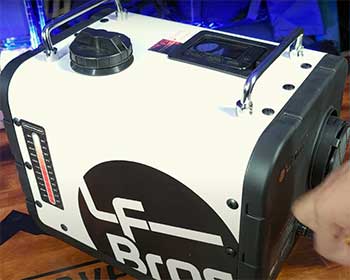
The LF Bros Diesel Heater is another budget-friendly option, often priced around $150-$200, slightly cheaper than the VEVOR’s typical $200-$250 range.
I’ve tinkered with an LF Bros unit at a friend’s campsite, and it’s decent for small spaces, like a tent or a tiny camper, with a 5KW output.
However, it lacks the VEVOR’s Bluetooth control and remote, relying on a basic LCD controller that feels dated.
The LF Bros heater also struggles at higher altitudes—above 10,000 feet, it started choking, unlike VEVOR’s seamless performance up to 18,045 feet.
While LF Bros is compact, its build feels flimsier, with thinner hoses that kinked easily during setup. For a few extra bucks, the VEVOR’s robust 8KW output and modern features make it a better pick for larger spaces or frequent use.
- VEVOR Vs. Webasto Diesel Heater
Webasto is the luxury sedan of diesel heaters, and I’ve seen one in action in a buddy’s high-end RV. Priced at $1,200-$1,800, it’s a major investment compared to VEVOR’s budget-friendly tag.
Webasto’s 9KW Air Top 2000 STC is whisper-quiet, a stark contrast to VEVOR’s noticeable pump clicks. Its build quality is top-tier, with durable components that feel like they’ll outlast my van.
However, the VEVOR holds its own with comparable heat output (8KW vs. 9KW) and a far easier setup—I installed mine in an hour, while Webasto often requires professional help.
For campers or DIYers who don’t need absolute silence or a decade-long lifespan, the VEVOR delivers 90% of Webasto’s performance at a fraction of the cost.
- VEVOR Vs. Hcalory Diesel Heater
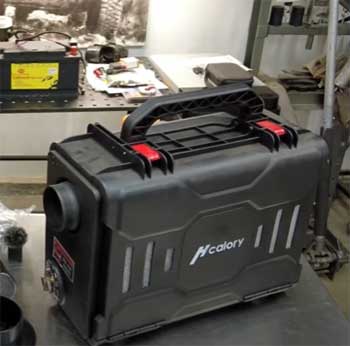
Hcalory’s 8KW diesel heater is a direct competitor to VEVOR, often retailing for $180-$220.
I tested a Hcalory unit at a workshop, and it’s solid, with a similar all-in-one design and a 5-liter tank.
Both heaters offer Bluetooth, but Hcalory’s app felt glitchy, dropping connections more than VEVOR’s reliable interface.
Hcalory’s heat output is on par, but its fuel consumption is slightly higher (0.2-0.7 L/h vs. VEVOR’s 0.16-0.62 L/h), which adds up on long trips.
The VEVOR also edges out with better altitude compensation—Hcalory’s maxes out at 13,000 feet, while I’ve used the VEVOR at 15,000 feet without issues.
If you’re choosing, VEVOR’s efficiency and app reliability tip the scales.
Frequently Asked Questions (FAQ)
Absolutely, it’s a solid choice for the price. The VEVOR 8KW Diesel Heater delivers powerful heat, fuel efficiency, and handy features like Bluetooth control. It’s not perfect—setup can be tricky, and the pump can be noisy—but it’s reliable for camping, RVs, or workshops. Compared to pricier brands like Webasto, it offers great value without sacrificing too much performance. I’ve used mine for two winters now, and it’s been a game-changer for staying warm off-grid.
With proper maintenance, I’d expect a VEVOR diesel heater to last 3-5 years or more, depending on usage. Mine’s been going strong for over two years with regular cleaning and fuel system checks. Some users report issues with pumps or control boards after a year, but these are cheap to replace. Compared to premium brands like Eberspacher, which can last a decade, the VEVOR’s lifespan is shorter but still respectable for its price point.
There’s been chatter about defective VEVOR heaters, particularly from early batches with faulty pumps or control boards. I experienced a stuck pump myself, but a quick fix got it running again. VEVOR’s customer service has improved, often sending replacement parts quickly. These issues haven’t been widespread enough to tank their reputation, and newer models, like the one with Bluetooth, seem more reliable. Always check your unit thoroughly upon arrival to catch any quirks early.
The VEVOR 8KW Diesel Heater is rated for 215-269 square feet, depending on insulation and climate. In my Eurovan, it easily heats the interior (about 100 square feet) to a cozy 70°F, even in 20-degree weather. In my uninsulated 10×12 shed, it keeps things comfortable but needs a higher setting. For larger spaces or drafty areas, you might need to run it on high or consider a second unit for consistent warmth.
Why The VEVOR Diesel Heater Is Your Next Must-Have?
After two years of using the VEVOR 8KW Diesel Heater, I’m hooked. It’s transformed my camping trips and garage projects, delivering powerful heat without draining my wallet.
Sure, it has quirks—like a noisy pump or vague instructions—but the pros far outweigh the cons. For anyone seeking an affordable, portable heating solution, this is it.
Grab one from VEVOR’s website, and get ready to stay warm wherever your adventures take you. Trust me, you won’t regret it!

